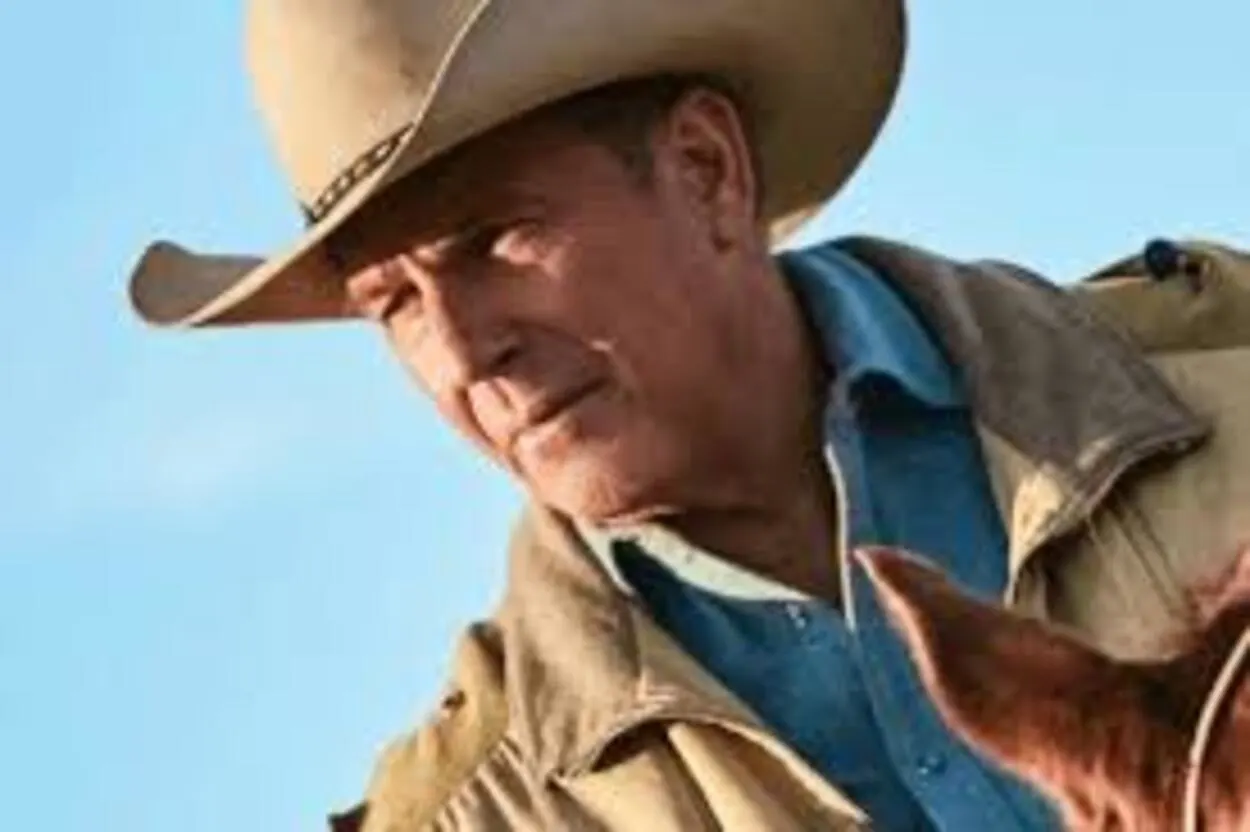In the tremendous territory of 1923, the American West was a place that is known for untamed magnificence and disorder. Against this backdrop, the Dutton family, driven by patriarch John Dutton, became the dominant focal point in the arresting series “Yellowstone.” This grasping show, set against the staggering scenes of Montana, winds around together, power, and the battle for control in our current reality where the line between good and bad is frequently obscured.
In this article, we dive into the core of the “Yellowstone” series as it unfurled in 1923, investigating its characters, plot complexities, and the authentic setting that brought about this convincing story.

Some Key Cast Members and Producers
Here’s a simple table featuring some of the main cast members and producers of the “Yellowstone” series:
| Role | Actor/Actress | Producer |
| John Dutton | Kevin Costner | Taylor Sheridan |
| Beth Dutton | Kelly Reilly | John Linson, Art Linson |
| Jamie Dutton | Wes Bentley | Kevin Costner, David C. Glasser |
| Kayce Dutton | Luke Grimes | David C. Glasser |
| Rip Wheeler | Cole Hauser | John Linson, Art Linson |
| Monica Dutton | Kelsey Asbille | Taylor Sheridan |
| Chief Thomas Rainwater | Gil Birmingham | John Linson, Art Linson |
| Lee Dutton | Dave Annable | Taylor Sheridan, John Linson |
| Lloyd Pierce | Forrie J. Smith | David C. Glasser |
| Monica Long Dutton | Kelsey Chow | John Linson, Art Linson |
Setting the Stage and Character Dynamics
As the roaring twenties unfurled, the United States was going through a transformation. The era marked a period of financial success, cultural dynamism, and social change. Against this backdrop, “Yellowstone” captured the pitch of a nation in transition, involving the Dutton family and their vast ranch as a microcosm of the larger American experience.
The year 1923 became a crucial crossroads for the Duttons, as they faced challenges that would shape their predeterminations and the land they savagely looked to safeguard.
At the heart of “Yellowstone” lies the intricate snare of relationships inside the Dutton family. John Dutton, portrayed by Kevin Costner, commands the sprawling Yellowstone Dutton Ranch with an unemotional demeanor, encapsulating the tough individualism of the West. His kids — Beth, Jamie, Kayce, and the enigmatic encouraging child Rip — each carry their intricacies to the narrative.
Beth Dutton, portrayed by Kelly Reilly, stands out as an area of strength for a, furiously defensive daughter. Her wild relationship with her father adds layers to the storyline, creating snapshots of pressure and vulnerability. Jamie Dutton, played by Wes Bentley, is the family’s lawyer, conflicted between loyalty to his family and the quest for equity.
Kayce Dutton, portrayed by Luke Grimes, encapsulates the cowboy way of life, grappling with the results of his decisions. Rip Wheeler, portrayed by Cole Hauser, fills in as a key part of the series. A loyal and rough ranch hand, Rip typifies the soul of the West and navigates the intricacies of his relationship with Beth, adding an emotional profundity to the series.

Plot Intricacies and The Romances
In 1923, the Duttons faced a myriad of challenges to their way of life. Land engineers, encroaching corporations, and political maneuvering threatened the ranch’s presence. The series skillfully weaves together the personal and political, creating a narrative that investigates the results of force and the lengths one will go to safeguard what is theirs.
John Dutton’s tireless interest in maintaining command over his ranch frames the backbone of the plot. The strain escalates as the Duttons end up entangled in clashes with adjoining Indian reservations, ambitious politicians, and degenerate financial specialists. The intricacies of these fights for control are masterfully portrayed, revealing the flimsy line between morality and survival.
“Yellowstone” doesn’t avoid investigating the complications of adoration and romance against the rough backdrop of the American West. Beth and Rip’s turbulent relationship takes the all-important focal point, showcasing an affection that transcends societal standards. The series beautifully captures the vulnerability and strength that affection brings to the characters, creating a poignant component amidst the chaos.

The Historical Context and the Role of Native American Communities
To appreciate the profundity of “Yellowstone” in 1923, one should think about the historical setting that shaped the American West during this era. The aftermath of The Second Great War and the beginning of Disallowance had significant impacts on the nation, and these changes are reflected in the series.
The clash between traditional ranching values and the encroachment of innovation reflects the broader battles of a nation navigating its way through a rapidly changing world. A notable aspect of the series is its portrayal of Native American people and their complicated relationship with the Duttons.
As the Duttons try to protect their land, they wind up at chances with adjoining reservations. The series navigates the historical treacheries faced by Native American people, revealing insight into a point of view frequently neglected in Western narratives.

Cinematic Brilliance and the Soundtrack
“Yellowstone” isn’t just a victory in narrating but also a visual masterpiece. The series leverages the breathtaking landscapes of Montana to create a cinematic encounter that transports watchers to the rough beauty of the American West.
The broad shots of the Yellowstone Dutton Ranch, set against the backdrop of mountains, streams, and vast prairies, add to the vivid quality of the series. No exploration of “Yellowstone” in 1923 would be finished without acknowledging the job of its evocative soundtrack.
The series utilizes a blend of contemporary and period-appropriate music to enhance the emotional resonance of key minutes. The soundtrack turns into a character in itself, weaving seamlessly into the fabric of the narrative and elevating the review insight.

Challenges and Triumphs
The challenges faced by the Dutton family in 1923 are emblematic of the broader battles of the American West during this period. Monetary tensions, political machinations, and the encroachment of outside interests threatened the actual fabric of the ranching way of life.
The series artfully captures the pressure between tradition and progress, portraying a world in which the values of the past clash with the inevitability of change. Monetary tensions in the aftermath of The Second Great War had a significant impact on the American West.
The demand for assets, combined with a rapidly developing market, prompted increased competition for land. The Duttons, with their vast ranch, wound up at the focal point of this battle. The series portrays the monetary intricacies of ranching, featuring the precariousness of a way of life profoundly attached to the land.
The political landscape of 1923 further complicated the Duttons’ battle for survival. The clash between individualism and government intercession takes the middle of everyone’s attention as the family battles with politicians trying to apply command over the West. The series masterfully navigates the intricacies of political maneuvering, illustrating the lengths to which individuals will go to protect their inclinations.
In facing these challenges, the Duttons arise as tough figures, emblematic of the indomitable soul that characterizes the American West. John Dutton, in particular, stands as an image of the tough individualism that characterizes the locale. His unwavering obligation to his family and the Ranch turns into a rallying point against the powers that threaten to dismantle the world he holds dear.
The Evolution of Family Dynamics
At the center of “Yellowstone” is the topic of family and the advancement of familial relationships. The year 1923 turns into a pot for the Duttons, testing the bonds that integrate them. The series masterfully captures the back-and-forth movement of family dynamics, portraying snapshots of solidarity and disagreement with equal poignancy.
John Dutton’s job as the patriarch is central to the exploration of family dynamics. His unemotional outside misrepresents a profound love for his youngsters, and the series strips back the layers to reveal the vulnerability beneath. The interactions between John and each of his kids are fraught with pressure, love, and the implicit load of familial expectations.
Beth’s relationship with her father, in particular, turns into a focal point in 1923. The searing, autonomous daughter clashes with John’s authoritative presence, and their dynamic goes through significant movements all through the series. The exploration of a father-daughter relationship about influence, control, and love adds a rich layer of emotional intricacy to the narrative.
Conclusion
- “Yellowstone” in 1923 is an excursion into the heart of the American West, a tale of family, power, and the battle for survival.
- As the Duttons navigate the challenges of a changing world, the series captivates watchers with its rich character dynamics, intricate plotlines, and shocking cinematography.
- In investigating the historical setting and cultural nuances, “Yellowstone” transcends the traditional Western classification, offering a nuanced and convincing narrative that resonates with audiences.
- As the saga keeps on unfurling, the allure of “Yellowstone” in 1923 remains a persevering testament to the immortal subjects that characterize the human experience.
